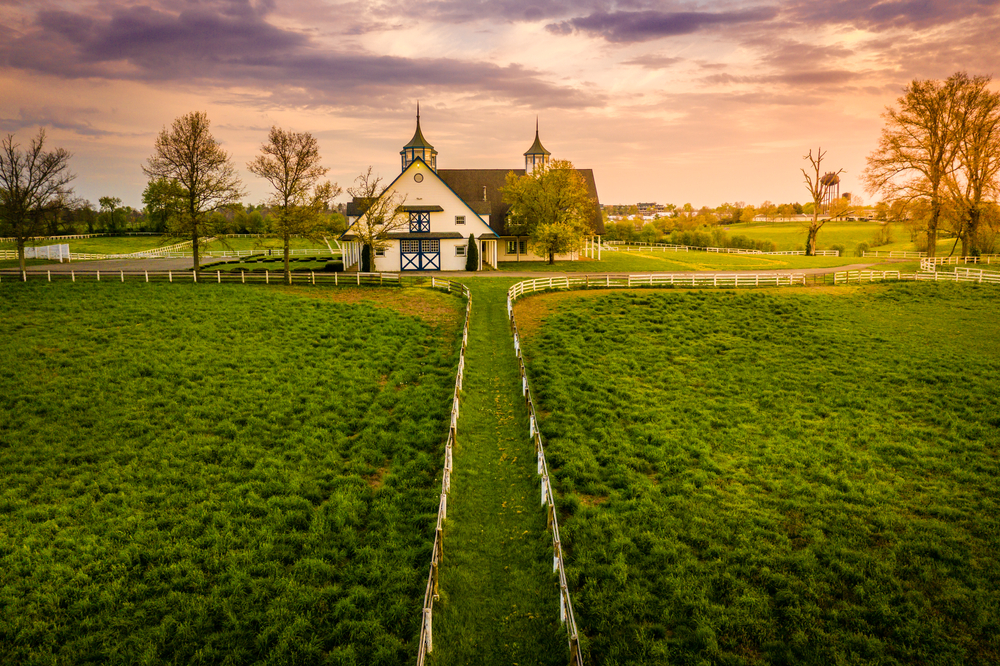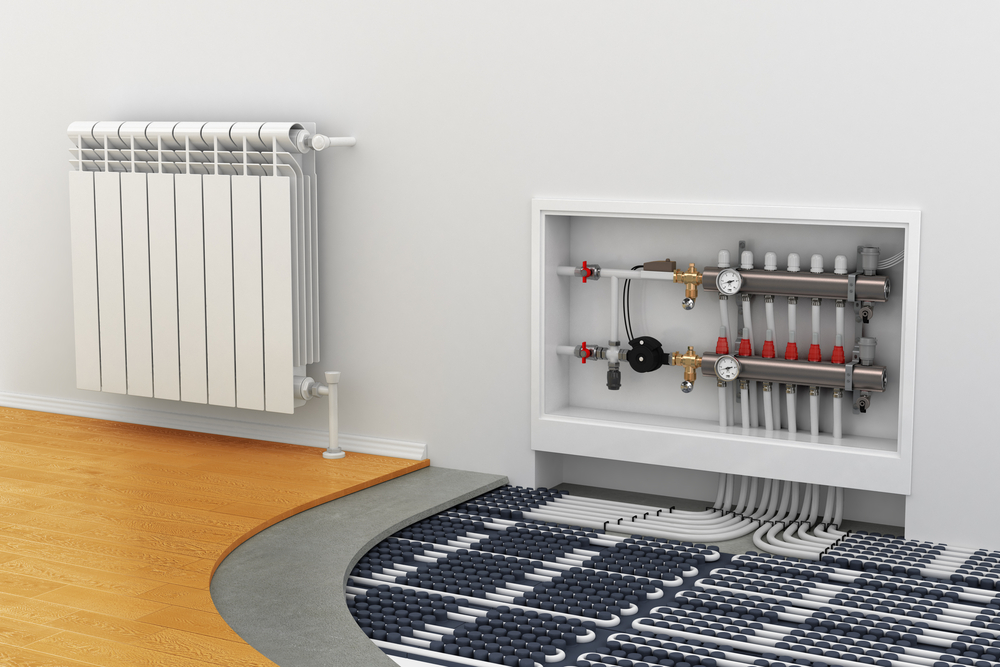A greenhouse is a valuable addition to any garden or backyard, offering the opportunity to extend the growing season, protect plants from harsh weather conditions, and create a controlled environment for optimal plant growth. Whether you're a seasoned gardener or a beginner, building a greenhouse requires careful planning and execution to ensure its functionality and longevity. In this comprehensive guide, we will walk you through the essential steps involved in building a greenhouse, providing you with the knowledge and confidence to embark on this exciting project. From site selection and design considerations to construction and maintenance, we'll cover it all.
Building a Greenhouse
Building a greenhouse allows you to create a controlled environment for growing plants, regardless of the external conditions. It serves as a protective structure that harnesses sunlight and provides insulation, allowing you to extend the growing season, start plants earlier, and grow delicate or exotic species that may not thrive in your region's climate. Whether you're passionate about gardening, have a green thumb, or simply want to explore sustainable food production, a greenhouse offers countless benefits and opportunities for plant cultivation.
Benefits of Building a Greenhouse
Before diving into the construction process, let's explore the numerous advantages of having a greenhouse:
- Extended Growing Season: A greenhouse enables you to grow plants earlier in the spring and later into the fall, effectively extending the growing season. This means more harvests and a wider variety of crops.
- Protection from Extreme Weather: Harsh weather conditions such as frost, excessive heat, strong winds, and heavy rain can damage or destroy plants. A greenhouse provides a sheltered environment, shielding your plants from these elements and minimizing the risk of crop loss.
- Pest and Disease Control: Greenhouses offer a level of protection against pests and diseases. By controlling the access of insects, rodents, and other harmful organisms, you can prevent infestations and reduce the need for chemical interventions.
- Optimal Growing Conditions: With a greenhouse, you have the ability to control temperature, humidity, light, and airflow, creating the ideal conditions for plant growth. This allows you to cultivate a wider range of plants and achieve higher yields.
- Year-Round Gardening: Some greenhouses are designed to provide year-round gardening opportunities, allowing you to grow crops even during the winter months. This is particularly beneficial for enthusiasts who want to enjoy gardening all year or produce fresh food consistently.
- Sustainable and Organic Gardening: A greenhouse provides an excellent platform for practicing sustainable and organic gardening. With the ability to control inputs, minimize pesticide use, and optimize resource utilization, you can grow plants in an environmentally friendly manner.
By understanding the benefits of building a greenhouse, you can better appreciate the value it brings to your gardening endeavors and overall lifestyle.
Site Selection and Preparation
The success of your greenhouse project starts with selecting an optimal location and preparing the site properly. Follow these steps:
- Sun Exposure: Choose a site that receives ample sunlight throughout the day, ideally facing south to maximize exposure. Avoid areas with excessive shade from buildings, trees, or other structures.
- Soil Quality and Drainage: Ensure the soil is well-drained and suitable for plant growth. Conduct a soil test to assess its composition and make any necessary amendments to optimize fertility.
- Access to Water and Utilities: Consider proximity to a water source for irrigation and access to electricity for lighting, heating, and ventilation systems. Installing water lines and electrical connections may be necessary.
- Wind Protection: Assess the potential wind patterns in your area and select a site that offers some natural protection, such as existing trees or structures. Consider using windbreaks or planting shrubs to create a barrier against strong winds.
- Ease of Access: Choose a location that is convenient for maintenance, harvesting, and transporting supplies. Ensure there is adequate space around the greenhouse for pathways and equipment maneuverability.
- Local Regulations and Permits: Check with your local authorities regarding zoning regulations, building codes, and permits required for constructing a greenhouse. Compliance with regulations will help avoid potential legal issues.
By carefully selecting and preparing the site, you set the foundation for a successful greenhouse project and create an environment conducive to plant growth.

Choosing the Right Greenhouse Design
With a wide variety of greenhouse designs available, it's important to choose one that suits your needs, budget, and available space. Consider the following factors:
- Size: Determine the size of the greenhouse based on your gardening goals and available space. Consider the number of plants you wish to grow, space for walkways, and potential future expansion.
- Shape: Greenhouses come in various shapes, including traditional rectangular, curved, or even geodesic domes. Each shape has its advantages in terms of aesthetics, space utilization, and structural integrity.
- Materials: Decide on the materials for the greenhouse frame and cover. Common options include wood, aluminum, galvanized steel, or PVC for the frame, and glass, polycarbonate, or polyethylene film for the cover. Each material has its pros and cons in terms of durability, insulation, and cost.
- Style: Consider the architectural style of the greenhouse and how it will complement your existing landscape or structures. From classic Victorian designs to modern and minimalist styles, choose a greenhouse that fits your aesthetic preferences.
- Budget: Determine your budget and research the cost implications of different designs. Remember to factor in not just the initial construction costs but also ongoing maintenance, heating, and cooling expenses.
- Climate Considerations: Take into account your local climate and choose a greenhouse design that offers appropriate insulation, ventilation, and structural strength to withstand weather conditions specific to your region.
By carefully considering these design factors, you can select a greenhouse that meets your requirements and ensures optimal plant growth.
Gathering Materials and Tools
Before starting the construction process, gather all the necessary materials and tools. This will help streamline the building process and avoid delays. Consider the following items:
Materials:
- Greenhouse frame materials (wood, aluminum, galvanized steel, etc.)
- Covering materials (glass, polycarbonate panels, polyethylene film, etc.)
- Fasteners (screws, nails, brackets, etc.)
- Foundation materials (concrete, treated lumber, etc.)
- Insulation materials (if required)
- Ventilation components (windows, vents, fans, etc.)
- Irrigation system components
- Lighting fixtures (if needed)
- Shelving and storage materials
Tools:
- Measuring tape or ruler
- Level
- Hammer
- Screwdriver (manual or power)
- Drill
- Saw (circular saw, jigsaw, etc.)
- Staple gun
- Pipe cutter (if using PVC pipes)
- Safety equipment (gloves, safety goggles, etc.)
Having all the necessary materials and tools on hand ensures a smoother construction process and minimizes interruptions.
Foundation Construction
Building a solid foundation is crucial for the stability and longevity of your greenhouse. Follow these steps to construct a strong and level foundation:
- Choose the Foundation Type: There are several common options for greenhouse foundations, including concrete slabs, treated lumber frames, or even gravel pads. Consider your budget, local climate, and the intended use of your greenhouse when selecting the foundation type.
- Prepare the Site: Clear the area of any vegetation, rocks, or debris. Level the ground as much as possible to ensure an even foundation.
- Mark the Foundation Dimensions: Use stakes and string to mark the perimeter of the foundation according to the greenhouse's size and design. Double-check the dimensions to ensure accuracy.
- Excavate the Area: Dig a trench for the foundation, ensuring it is deep enough to accommodate the foundation materials. The depth will depend on your specific foundation type and local building codes.
- Install Drainage System: If required, incorporate a drainage system to prevent water buildup around the foundation. This can be achieved by installing perforated pipes or gravel trenches.
- Build the Foundation: Follow the specific instructions for your chosen foundation type. For concrete slabs, create a formwork using wooden boards, and pour and level the concrete mixture. For treated lumber frames, assemble the frame according to the dimensions and secure it firmly to the ground.
- Allow for Curing or Drying: If you have poured a concrete foundation, allow sufficient time for the concrete to cure and dry before proceeding to the next steps. This duration will vary depending on the type of concrete used and the local climate conditions.
Framing and Assembly
Once the foundation is complete, it's time to start framing the greenhouse structure. Follow these steps to assemble the frame:
- Refer to the Design Plans: Consult the greenhouse design plans or instructions provided by the manufacturer. Familiarize yourself with the specific framing requirements and dimensions.
- Cut and Prepare the Frame Materials: Measure and cut the frame materials according to the design plans. Use a saw appropriate for the chosen frame material (e.g., circular saw for wood or metal-cutting tools for aluminum).
- Assemble the Frame: Begin by erecting the end walls and then connect them with the side walls and roof beams. Secure the frame components using appropriate fasteners (screws, nails, or brackets) as specified in the design plans.
- Ensure Level and Square Alignment: Use a level and a measuring tape to ensure the frame is level and square. Adjust the frame as necessary to achieve proper alignment.
- Install Bracing and Reinforcements: Strengthen the frame by installing diagonal braces and reinforcements at key stress points. This will add stability and structural integrity to the greenhouse.
- Check for Secure Fastening: Double-check that all frame components are securely fastened and tightened. This is essential to ensure the structural stability of the greenhouse.

Covering and Glazing
Covering your greenhouse is the next step in the construction process. The type of covering material you choose will depend on factors such as budget, climate, and personal preferences. Here are the general steps for covering and glazing your greenhouse:
- Select the Covering Material: Common options for greenhouse coverings include glass, polycarbonate panels, or polyethylene film. Each material has different characteristics in terms of durability, insulation, light transmission, and cost.
- Prepare the Covering Material: If using glass or polycarbonate panels, measure and cut them to the appropriate size according to the frame dimensions. For polyethylene film, ensure you have enough material to cover the entire greenhouse structure.
- Install the Covering: Start with the end walls and then move to the side walls and roof. Secure the covering material to the frame using the recommended fasteners or clamps specific to the chosen material. Ensure a tight and secure fit to prevent air leakage and damage from wind or inclement weather.
- Seal Joints and Edges: Use appropriate sealants or tapes to seal any gaps or joints between the covering material and the frame. This helps to create a weatherproof barrier and maintain the greenhouse's insulation properties.
- Ensure Proper Ventilation: Install vents or windows in strategic locations to allow for proper airflow and temperature control. This is important to prevent overheating and promote healthy plant growth.
- Consider Shading Options: Depending on your climate and the specific plants you intend to grow, you may need to incorporate shading elements such as shade cloths or blinds to control the amount of sunlight entering the greenhouse.
Properly covering and glazing your greenhouse ensures optimal insulation, light transmission, and protection for your plants.
Ventilation and Climate Control
Proper ventilation and climate control are crucial for maintaining the ideal growing conditions within your greenhouse. Here are some important steps to consider:
- Install Vents and Windows: Strategically place vents and windows throughout the greenhouse to facilitate airflow and regulate temperature. Automatic vent openers can be used to control ventilation based on temperature fluctuations.
- Consider Fans and Circulation: In addition to natural ventilation, consider installing fans or circulation systems to ensure adequate air movement within the greenhouse. This helps prevent the buildup of stagnant air, which can lead to mold or disease.
- Thermostats and Climate Control Systems: Install thermostats or climate control systems to monitor and regulate temperature and humidity levels. This allows you to maintain optimal conditions for plant growth, especially during extreme weather conditions.
- Insulation and Energy Efficiency: Insulate the greenhouse structure using materials such as double-layered glazing, shade cloths, or insulation panels. This helps to conserve energy, reduce heat loss, and maintain a more stable climate.
- Irrigation and Watering Systems: Incorporate an irrigation system to ensure proper and consistent watering for your plants. This can range from simple drip irrigation systems to more advanced automated systems with timers and sensors.
By implementing effective ventilation and climate control measures, you can create a stable and conducive environment for your plants to thrive.

Interior Setup and Shelving
With the greenhouse structure complete, it's time to set up the interior and organize the space for optimal plant growth. Consider the following steps:
- Design Your Plant Layout: Plan the placement of your plants, considering factors such as their growth habits, space requirements, and compatibility. Leave sufficient space for walkways and access to plants for maintenance and harvesting.
- Install Shelving or Benches: Incorporate shelving or benches to maximize vertical space and provide additional surfaces for plant placement. Choose materials that are durable, water-resistant, and easy to clean.
- Consider Plant Supports: Depending on the types of plants you intend to grow, install appropriate supports such as trellises, stakes, or cages. These help to train and support plants as they grow, maximizing space and promoting healthy growth.
- Provide Adequate Lighting: If natural light is insufficient, supplement it with artificial lighting, especially during the darker months or for plants with higher light requirements. LED grow lights are an energy-efficient option for providing targeted light to your plants.
- Organize Tools and Supplies: Set up an area within the greenhouse for storing tools, gardening supplies, and potting materials. This ensures easy access and keeps the workspace tidy.
By efficiently organizing the interior of your greenhouse, you can optimize space utilization, facilitate plant care, and create an efficient workflow.
Irrigation and Water Management
Proper irrigation and water management are essential for maintaining healthy plants in your greenhouse. Consider the following steps:
- Determine Watering Needs: Understand the water requirements of your specific plants, as different species have varying needs. Consider factors such as plant type, growth stage, environmental conditions, and local climate.
- Install an Irrigation System: Choose an irrigation system that suits your needs, such as drip irrigation, overhead sprinklers, or misting systems. Install the system according to the greenhouse layout, ensuring that water reaches all plants effectively.
- Automate Irrigation: For convenience and accuracy, consider using automated irrigation systems with timers, sensors, or moisture meters. These systems help ensure consistent and efficient watering without the need for constant monitoring.
- Monitor Soil Moisture: Regularly monitor the moisture levels in the soil to avoid under or overwatering. Use moisture meters or perform manual checks by inserting your finger into the soil to assess its moisture content.
- Collect and Conserve Water: Consider implementing water collection systems to collect rainwater or condensation runoff. This helps conserve water and provides an additional source for irrigation.
By establishing an efficient irrigation system and practicing effective water management, you can promote healthy plant growth while conserving water resources.
Maintenance and Upkeep
To ensure the longevity and productivity of your greenhouse, regular maintenance is essential. Consider the following maintenance tasks:
- Clean the Greenhouse: Regularly clean the interior and exterior of the greenhouse to remove dirt, dust, and debris. This helps maintain optimal light transmission and prevents the buildup of pests or diseases.
- Inspect for Damage: Routinely inspect the greenhouse structure for any signs of damage, such as loose fasteners, cracked glazing, or damaged components. Repair or replace any damaged parts promptly to maintain structural integrity.
- Prune and Trim: Regularly prune and trim plants to control their growth, improve airflow, and prevent overcrowding. Remove dead or diseased plant material to minimize the risk of pests or diseases spreading.
- Monitor and Control Pests: Regularly inspect plants for signs of pests or diseases. Implement integrated pest management techniques, such as biological controls or organic sprays, to manage pest infestations effectively.
- Check Climate Control Systems: Regularly inspect and maintain climate control systems, including fans, vents, thermostats, and sensors. Clean or replace filters as necessary to ensure proper airflow and efficient operation.
- Fertilization and Soil Management: Monitor soil fertility and adjust nutrient levels as needed. Use organic fertilizers or soil amendments to replenish essential nutrients and maintain optimal plant health.
- Seasonal Adjustments: Make seasonal adjustments to your greenhouse, such as shading in the summer or adding insulation in the winter. Adapt to changing weather conditions to ensure a suitable growing environment for your plants.
Regular maintenance and timely repairs ensure that your greenhouse remains in good condition, maximizing its productivity and longevity.
Conclusion
Building a greenhouse is a rewarding and fulfilling project that offers numerous benefits for gardeners and plant enthusiasts. By following the essential steps outlined in this guide, you can construct a functional and successful greenhouse that provides a controlled environment for optimal plant growth. From site selection and preparation to framing, covering, and interior setup, each step plays a crucial role in the overall success of your greenhouse.





